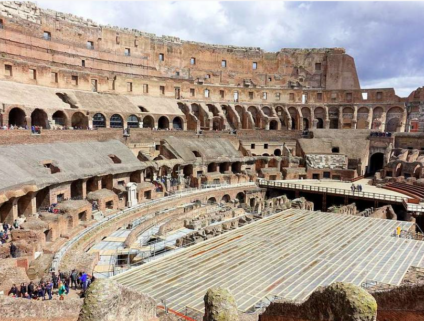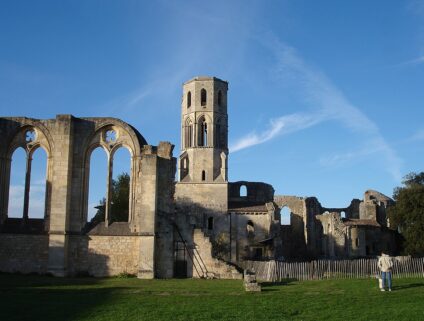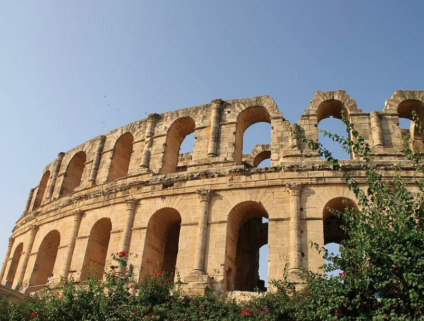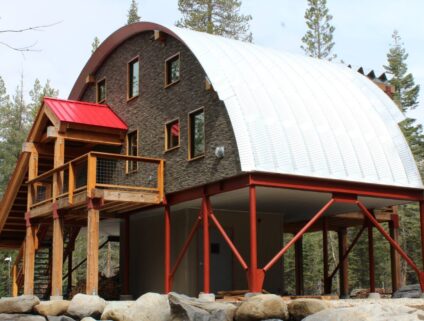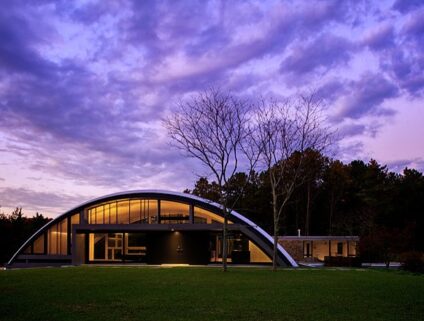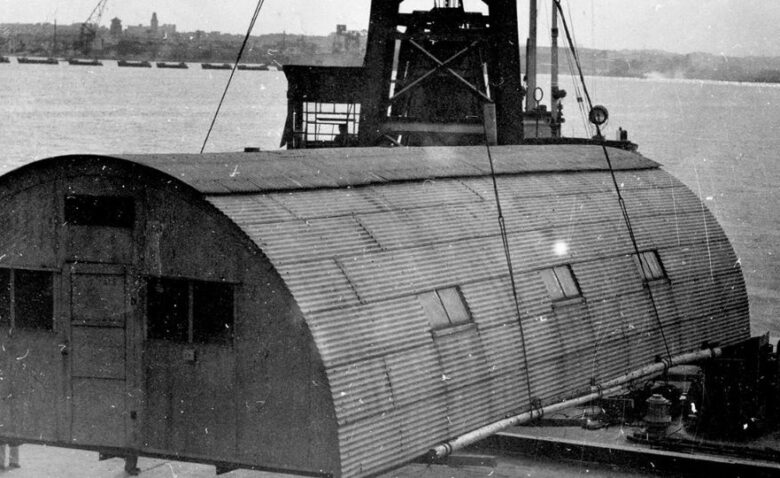
Quonset Hut History
Quonset Hut History: From WW2 Bunker to Modern Steel Building
During World War II, the U.S. military faced an urgent challenge: how to quickly house troops and equipment across the globe. The solution came in the form of a simple yet revolutionary structure—the Quonset hut.
What began as a pragmatic wartime necessity has evolved into an enduring symbol of American ingenuity and adaptation with the modern-day steel Quonset hut. We explore the fascinating evolution of the Quonset hut—from its origins and widespread military deployment to its surprising second life in peacetime America and its continuing influence on modern architecture and sustainable design principles.
For over seven decades, the strength of the Quonset hut continues to serve families and businesses all over the United States and around the world.
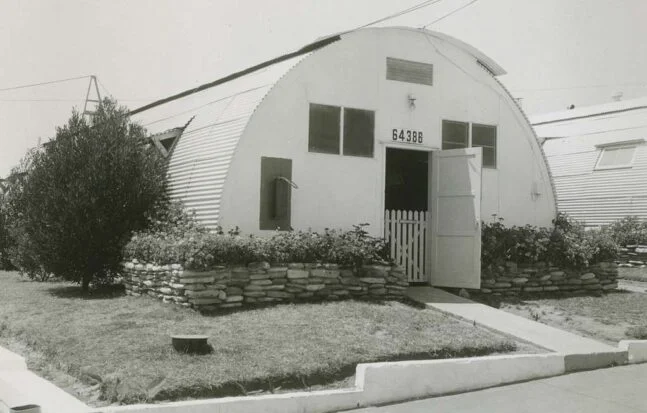
What is a Quonset hut?
The definition of a Quonset hut is a sturdy, prefabricated arch structure made of galvanized steel.
Quonsets are a type of building that combines the walls and roof into one continuous arch, distributing the building load evenly and requiring no internal supports.
How did the Quonset hut get its name?
The Quonset hut is named after the location where it was first built, the Davisville Naval Construction Battalion Center at Quonset Point, Rhode Island. This proved to be a valuable and strategic location for the U.S. Navy, with the Construction Battalion Center creating Quonset huts for the surrounding Camp Thomas, Camp Endicott, the Advanced Base Depot, and the Advanced Base Proving Ground, as well as shipping them around the world.

Who invented the Quonset hut and when?
The George Fuller Construction Company is credited with being the first company to manufacture Quonset huts on behalf of the US Navy in 1941. The exact inventor or designer isn’t known, but the design is based on the Nissen hut design that originated from World War I.
In World War II, the U.S. Navy needed buildings that could be quickly assembled and disassembled and withstand the rigors of the military, and the Quonset hut was created. The Quonset hut wasn’t necessarily invented but was a vast improvement of the Nissen Hut.
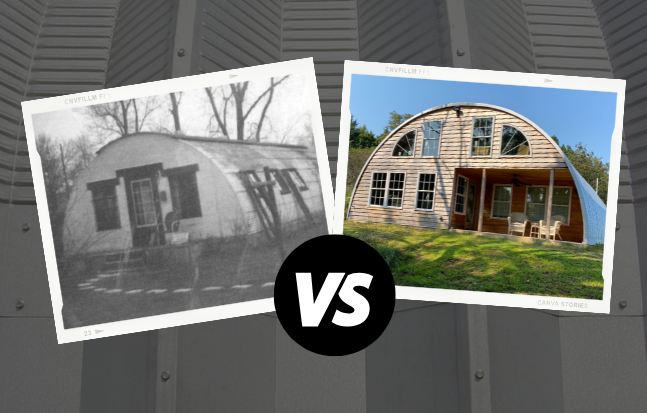
What's a Nissen hut?
Named after its inventor, Lt. Colonel Peter Nissen, a Canadian officer in the Royal Engineers during the First World War, Nissen huts are similar to Quonset huts in form and function but are generally smaller with simpler designs.
The key difference between the two huts is in the depth of the curve:
- Nissen huts have deeper curves and lower walls, making their interiors less spacious.
- Quonset huts have shallower arches and more vertical walls, which makes them more spacious and usable.
There were also some design differences, such as the materials used for end walls and the applications. Nissen huts tended to be used for storage and utility, while Quonset huts have an array of applications.
What are Jamesway huts?
Unlike the Nissen and Quonset huts that use corrugated steel in their construction, the lesser-known Jamesway huts used a wooden frame. Jamesway huts also employ a rounded, semicircular construction, making them suitable for snowy conditions, which is where they were primarily used.
Today’s Quonset huts can be reinforced with batten or spray foam insulation, making them as comfortable as Jamesway huts, and as long-lasting and durable as steel structures should be.
Why did the U.S. Navy use Quonset huts?
The U.S. Navy wanted an all-purpose building that was lightweight, easy to ship and easy to assemble. On top of that, Quonset huts have several key advantages that made them the obvious building of choice in World War II.
Clear span interior
With no structural support poles or walls, Quonsets allow for unobstructed building space.
Strength of building
By using steel, Quonset huts have undeniable strength.
Quick construction
Steel Quonset huts are designed to be produced and assembled as kits, they take minimal time to erect.
Portable
Quonset huts can be assembled, disassembled and moved to different bases depending on their need.
What’s so great about arches in architecture?
The answer to the question about the Quonset hut’s famous domed roof is a matter of physics. An arch can support more weight because when weight is placed on top of the arch, the force is carried outward along the curve to supports known as abutments.
Thus, an arched or domed design can better withstand earthquakes, severe weather, and other acts of nature that send other types of structures crumbling to the ground.
Ancient Rome and Mesopotamia are the first known societies to incorporate the arch, as this 90-second video explains.
The resilience of arched construction is evidenced by century olds ruins around the world, including:
For thousands of years, builders have used different types of arches in architecture to create some of the most spectacular structures on earth. Now, designers use SteelMaster’s modern arch panel system to create structures that are just as aesthetically pleasing and timeless.
Quonset hut FAQs
How do you spell and pronounce Quonset?
You’ll find several misspellings of Quonset — quanset, quanzit, quanza, and even kwanzaa hut — but the correct spelling is Q-U-O-N-S-E-T. Here are pronunciation guides:
Pronunciation like: kwaan-suht
Pronunciation with a soft “s”: ˈkwän(t)-sət
Pronunciation with a hard “s”: ˈkwän-zət
What are Quonset huts made out of?
While an arch building could technically be made from various materials, steel remains the top choice for its strength, longevity, and low maintenance. During WWII, Quonset huts were constructed with thinner gauge steel than the heavy-duty, commercial-grade steel used today. Yet, many of those early structures still stand strong, which speaks to the durability of modern Quonset huts that are engineered to be even tougher.
While tin and aluminum can provide cover for a building, they do not stand up to the rigors of weather or natural disasters, or in the U.S. Navy’s case, war. Steel allows for Quonset huts to be virtually indestructible, with SteelMaster Quonset huts getting HVHZ approval for hurricane zones.
How long will Quonset huts last?
Because Quonset huts are made of steel coated with anti-corrosive agents and have an inherent structural strength, they can last a lifetime. Further, their disaster-resistant design allows them to withstand punishing weather that would destroy a standard building. SteelMaster believes in the Quonset hut’s long-lasting strength and offers customers a 50-year warranty.
How have Quonset huts changed since they were invented?
Quonset huts have continued to improve since their inception. For example, upgrades in building materials, such as advancements in steel production and anti-corrosive coatings, have increased durability. SteelMaster Quonset huts are also now produced with recycled steel, so Quonset huts have become an environmentally friendly choice for buildings.
The Navy found many advantages when they used Quonset huts, like flexibility, portability, and durability. SteelMaster took this design from the 1970s, combined the architectural strength of the arch with modern technology, and made structures strong enough to support the heaviest snow loads and able to survive the strongest winds, even a category 4 hurricane!
What’s an example of modern architects using arch-style buildings?
The structures that would easily be deemed examples of good architectural design and a host of other buildings that have changed the landscape of modern architecture.

Ready to get started?
Fill out the form below to get a free project consultation
Form Capture Name in CRM: English - Contact Form
"*" indicates required fields
By adding my phone number, I agree to receive recurring text messages at the phone number provided from SteelMaster Consent is not a condition to purchase. Carrier & data rates may apply. Message frequency may vary. Reply STOP to cancel. Reply Help for more information. View our Terms of Service for details.

